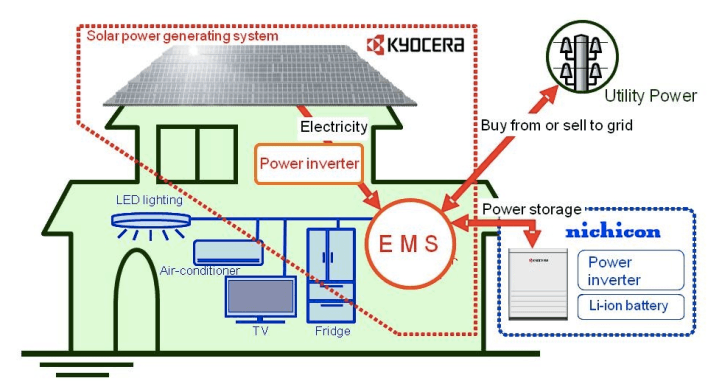
With performance improving, production volumes rising and costs on the decline, intelligent battery storage systems may provide the missing piece of the clean energy puzzle, enabling customers to cut the cord linking them to utility grids and ushering in the end of the centralized electric utility business model.
Analyzing regional scenarios across the U.S., the Rocky Mountain Institute (RMI), CohnReznick Think Energy and HOMER Energy concluded that utility grid parity for the combination of solar photovoltaic (PV) and battery storage systems is “already here in some areas and imminent in many others for millions of U.S. customers.”
The combination of solar PV and battery storage technologies – what the authors of “The Economics of Grid Defection” dub “utility-in-a-box” – can make "the electric grid optional for many customers – without compromising reliability and increasingly at prices cheaper than utility retail electricity.”
Solar PV and battery storage: The "utility in a box"
The report's authors draw three main conclusions from their scenario analysis:
- Solar-plus-battery grid parity is here already or coming soon for a rapidly growing minority of utility customers, raising the prospect of widespread grid defection.
- Even before total grid defection becomes widely economic, utilities will see further kWh revenue decay from solar-plus-battery systems.
- Because grid parity arrives within the 30-year economic life of typical utility power assets, it foretells the eventual demise of traditional utility business models.
Significantly, according to the authors of “The Economics of Grid Defection,” nationwide grid parity for the combination of solar PV and battery storage systems is likely to occur “well within the 30-year planned economic life of central power plants and transmission infrastructure.”
“Even before mass defection, a growing number of early adopters could trigger a spiral of falling sales and rising electricity prices that make defection via solar-plus-battery systems even more attractive and undermine utilities' traditional models.”
The results of analyzing four cases across five representative regional scenarios present electric utilities with a stark choice: Adapt to the emerging distributed clean energy infrastructure or face the “utility death spiral.” According to the report authors:
“New market realities are creating a profoundly different competitive landscape as both utilities and their regulators are challenged to adapt. Utilities thus must be a part of helping to design new business, revenue, and regulatory models.”
*Image credit: Kyocera
Graphs credit: Rocky Mountain Solar Institute, CohnReznick Think Energy and HOMER Energy, "The Economics of Grid Defection"
Newsletter Image Credit: Flickr/joncallas

An experienced, independent journalist, editor and researcher, Andrew has crisscrossed the globe while reporting on sustainability, corporate social responsibility, social and environmental entrepreneurship, renewable energy, energy efficiency and clean technology. He studied geology at CU, Boulder, has an MBA in finance from Pace University, and completed a certificate program in international governance for biodiversity at UN University in Japan.














